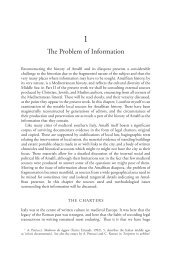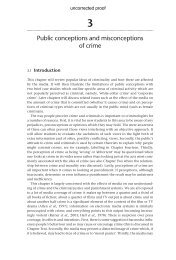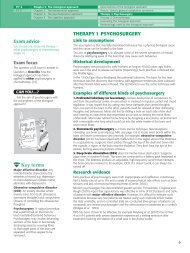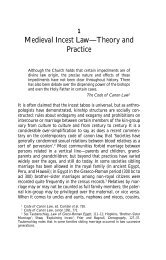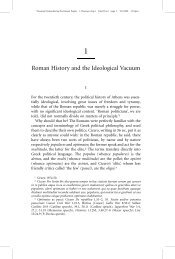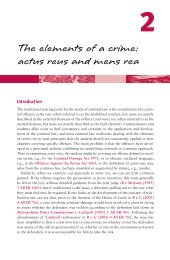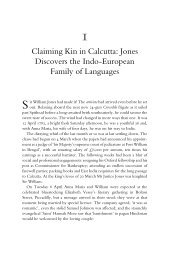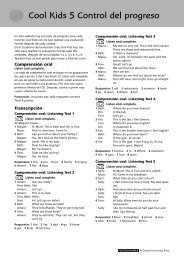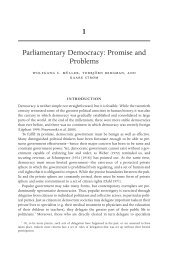Temperature (1) - Oxford University Press
Temperature (1) - Oxford University Press
Temperature (1) - Oxford University Press
You also want an ePaper? Increase the reach of your titles
YUMPU automatically turns print PDFs into web optimized ePapers that Google loves.
Brownian motion: evidence for moving particles<br />
Smoke is made up of millions of tiny bits of ash or oil droplets. If you look at<br />
smoke through a microscope, as on the right, you can see the bits of smoke<br />
glinting in the light. As they drift through the air, they wobble about in zig-zag<br />
paths. This effect is called Brownian motion, after the scientist Robert Brown<br />
who first noticed the wobbling, wandering motion of pollen grains in water, in<br />
1827.<br />
The kinetic theory explains Brownian motion as follows. The bits of smoke are<br />
just big enough to be seen, but have so little mass that they are jostled about<br />
as thousands of particles (gas molecules) in the surrounding air bump into<br />
them at random.<br />
View through<br />
microscope<br />
zig-zag paths<br />
of smoke bits<br />
Energy of particles<br />
The particles (atoms or molecules) in solids, liquids, and gases have kinetic energy<br />
because they are moving. They also have potential energy because their motion<br />
keeps them separated and opposes the bonds trying to pull them together. The<br />
particles in gases have the most potential energy because they are furthest apart.<br />
The total kinetic and potential energies of all the atoms or molecules in a<br />
material is called its internal energy. The hotter a material is, the faster its<br />
particles move, and the more internal energy it has.<br />
If a hot material is in contact with a cold one, the hot one cools down and<br />
loses internal energy, while the cold one heats up and gains internal energy.<br />
The energy transferred is known as heat.<br />
The term thermal energy is often used for both internal energy and heat.<br />
Q<br />
1 Say whether each of the following describes a solid, a<br />
liquid, or a gas:<br />
a Particles move about freely at high speed.<br />
b Particles vibrate and cannot change positions.<br />
c Fixed shape and volume.<br />
d Particles vibrate but can change positions.<br />
e No fixed shape or volume.<br />
f Fixed volume but no fixed shape.<br />
g Virtually no attractions between particles.<br />
Related topics: energy 4.01; fusion and vaporization 5.11; atoms and elements 11.01<br />
THERMAL EFFECTS<br />
microscope<br />
lamp smoke glass<br />
cell<br />
Kinetic energy<br />
Energy because of motion.<br />
Potential energy<br />
Energy stored because of a<br />
change in position or shape.<br />
glass<br />
cover<br />
2 Smoke is made up of millions of tiny bits of ash or oil<br />
droplets.<br />
a What do you see when you use a microscope to<br />
study illuminated smoke floating in air?<br />
b What is the effect called?<br />
c How does the kinetic theory explain the effect?<br />
3 If a gas is heated up, how does this affect the motion of<br />
its particles?<br />
4 What is meant by the internal energy of an object?<br />
!<br />
99





